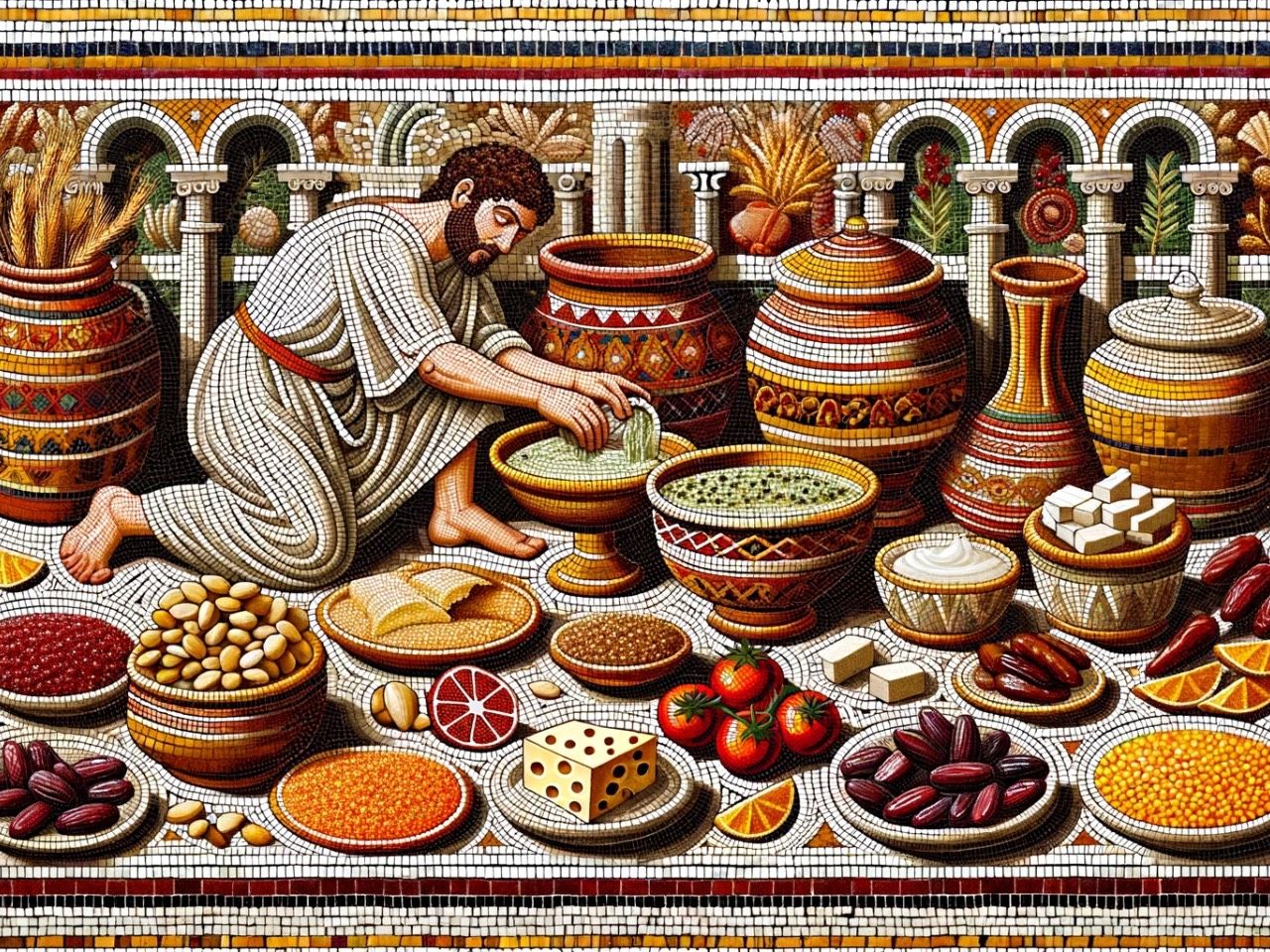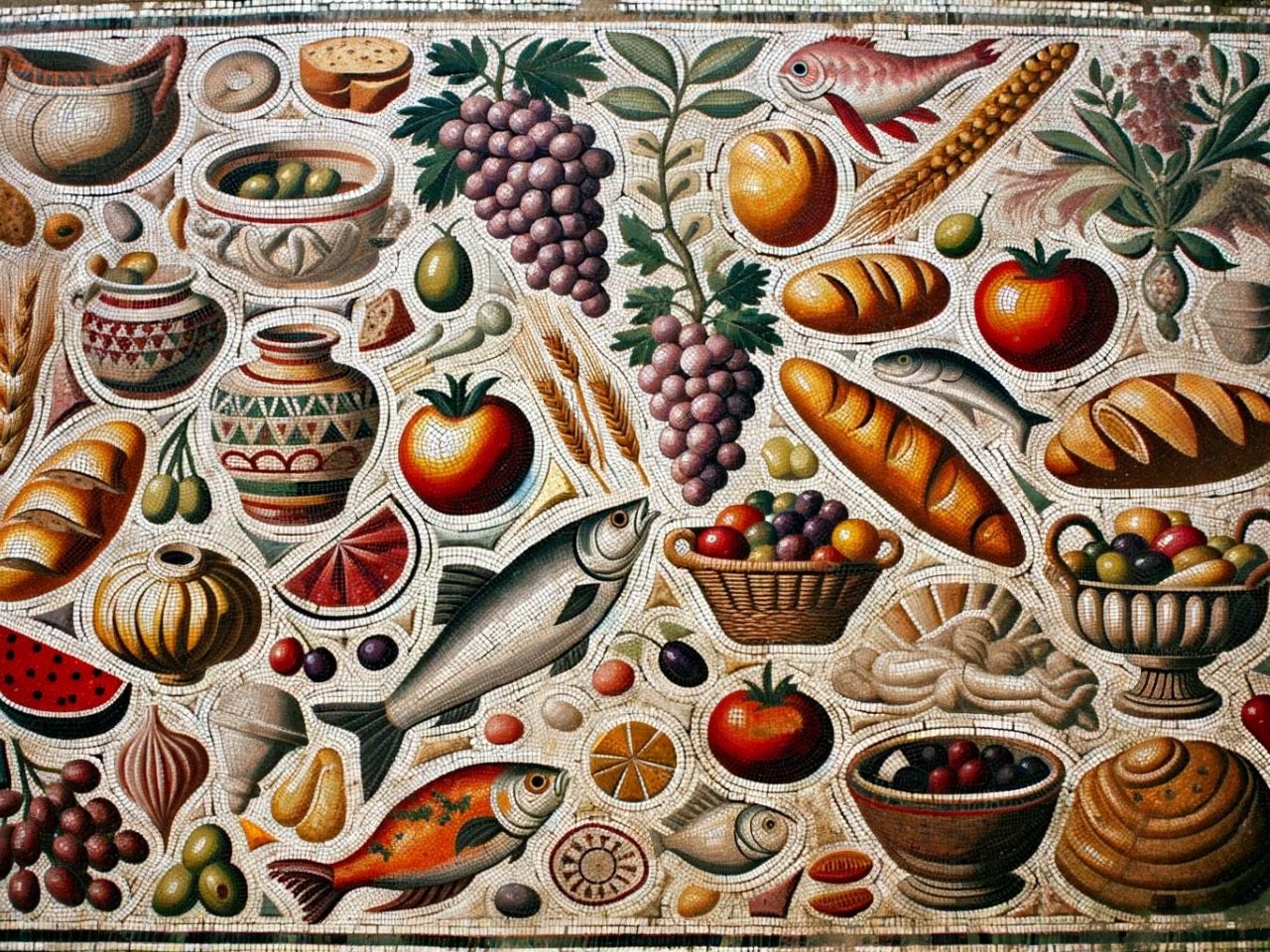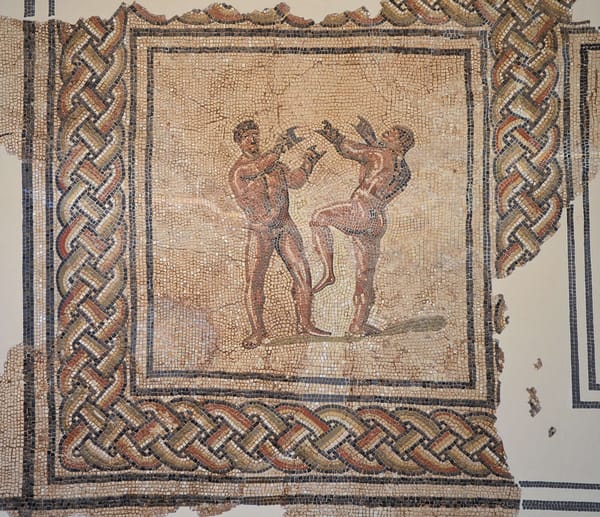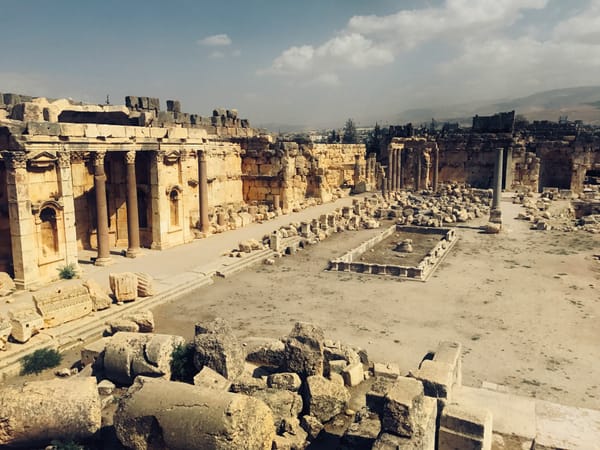The Six Culinary Pillars of Ancient Rome: A Gastronomic Odyssey
Embark on a culinary journey through Ancient Rome, where six foundational elements sculpted an era of unparalleled gastronomic artistry: Panis, Vinum, Oleum, Garum, Fructus, and Carnes.

The Roman Gastronomic Landscape
The Roman Empire, spanning continents and centuries, is renowned for its architectural marvels, military prowess, and cultural contributions. Yet, one of its most profound legacies lies in its culinary traditions. The Romans, with their vast trade networks and diverse provinces, had access to a plethora of ingredients, which they ingeniously incorporated into their daily meals. This article delves into the six pillars that defined Roman cuisine, offering a window into the tastes and flavors that delighted Roman palates.
1. Panis: More Than Just Bread
In the heart of Rome, amidst its grand coliseums and bustling markets, 'panis' or bread stood as a symbol of daily life. It wasn't merely a food item; it was a reflection of Roman society. From the hardy barley loaves consumed by the working class to the sophisticated wheat breads of the aristocracy, panis was both a sustenance and a status symbol.
2. Vinum: The Celebratory Elixir
Every Roman festivity, be it a military victory or a religious rite, was incomplete without 'vinum'. This wine, sourced from vineyards scattered across the empire, was more than a drink; it was a cultural statement. It represented joy, camaraderie, and the Roman penchant for the finer things in life.
3. Oleum: The Versatile Gold
'Oleum', or olive oil, was the silent hero of Roman kitchens. Used for cooking, lighting, and even skincare, its versatility was unmatched. The sprawling olive orchards of the Mediterranean bore witness to its significance, making it a prized possession in Roman households.

4. Garum: The Flavor Enhancer
Garum, the pungent fish sauce, might raise eyebrows today, but in Ancient Rome, it was a culinary masterpiece. A dash of garum could elevate a dish, lending it a depth of flavor that was both rich and complex. Its production, a meticulous process involving fermentation, showcased the Roman dedication to culinary perfection.
5. Fructus: Nature's Sweet Offerings
The Roman love for 'fructus' or fruits was evident in their frescoes and mosaics. Orchards laden with juicy figs, succulent dates, and vibrant pomegranates were not just sources of nutrition but also symbols of Roman agricultural expertise and their connection to nature.
6. Carnes: The Symbol of Opulence
In a society where banquets were a reflection of power and prestige, 'carnes' or meats occupied center stage. From succulent pork to exotic game birds, the variety of meats on a Roman platter was indicative of its host's status. It wasn't just about taste; it was a display of wealth and grandeur.
The Lasting Impact of Roman Cuisine
The Roman Empire may have fallen, but its culinary influences persist. The six pillars of Roman cuisine, with their rich flavors and profound cultural significance, offer a tantalizing glimpse into a bygone era. They remind us of a time when food was not just about sustenance but an art form, a communal experience, and a reflection of societal values. As we savor Italian pasta drizzled with olive oil or relish a glass of fine wine, we are, in essence, paying homage to the culinary genius of Ancient Rome, a legacy that continues to inspire and delight.









About the Roman Empire Times
See all the latest news for the Roman Empire, ancient Roman historical facts, anecdotes from Roman Times and stories from the Empire at romanempiretimes.com. Contact our newsroom to report an update or send your story, photos and videos. Follow RET on Google News, Flipboard and subscribe here to our daily email.
Follow the Roman Empire Times on social media: